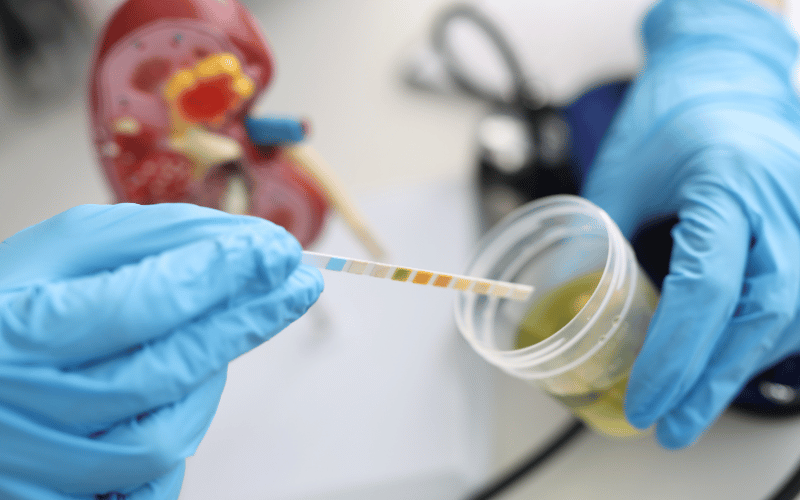Symptom 7: Dark Urine

It might seem like a small thing, noticing the color of our urine. Yet, this everyday act, which many take for granted, can occasionally reveal significant health insights. The transition from a light, straw-like shade to a deeper, amber, or cola-like hue can raise eyebrows. Especially when this change occurs without a specific dietary or hydration-related reason, it demands a closer look, particularly in the context of Klatskin tumors.
Urine’s hue isn’t just about aesthetics; it tells tales of our body’s internal workings. Bilirubin, a byproduct of the breakdown of red blood cells, is processed by the liver, mixed with bile, and typically excreted in the feces, lending them a brownish tone. However, when a Klatskin tumor obstructs bile ducts, the bilirubin might take a detour, entering the bloodstream and being excreted through urine. This overflow of bilirubin darkens the urine, offering a clue to the altered internal dynamics.
Dark urine seldom exists in isolation. It’s often a piece in a jigsaw of interconnected symptoms pointing towards a bile duct problem. Jaundice, with its telltale yellowing of the eyes and skin, may accompany dark urine. So could pale stools, as the diverted bilirubin misses its usual exit route. The interplay between these symptoms crafts a story – one where the bile duct, and potentially a Klatskin tumor, are central characters.
Not every instance of dark urine signals doom. Dehydration, certain foods, medications, or even intense exercise can modify urine’s color. However, persistent darkening, especially if paired with other symptoms indicative of liver or bile duct dysfunction, warrants a more in-depth investigation. It’s essential to differentiate between everyday causes and potential indicators of something more sinister lurking beneath. (7)